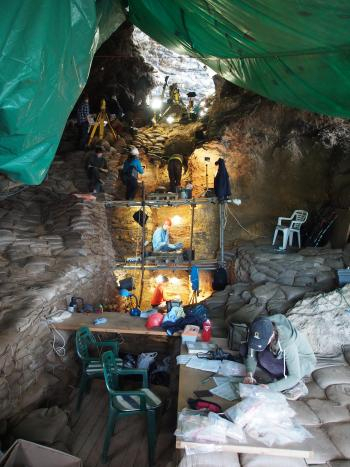
A recent study report published in Journal Nature has revealed that early humans who lived in South Africa successfully survived a supervolcano eruption which happened 74,000 years ago.
According to the study, people in the affected area continued their living as they were supposed to when Mount Toba, the supervolcano erupted and spewed about 3,000 cubic kilometers of ash, rock, and glass.
The explosion which happened in Mount Toba, Indonesia was considered the most powerful supervolcano eruption in the last two million years. As gases and other particles gulped the atmosphere, the sun was blocked, and the planet was plunged into a deep winter for many years. Due to the absence of sunlight, life was pushed toward the brink of extinction, as it resulted in famine throughout the planet.
Earlier, scientists believed that the endless volcanic winter had devastated populations all around the world. But now, the new study conducted by researchers at the Arizona University has found that humans lived in an unflinching manner throughout this cataclysmic event.
"What we found was that during and after the time of the Toba eruption people lived at the site continuously, and there was no evidence that it impacted their daily lives," said Eric Fisher, an associate research scientist at the Arizona University.
During the research, the study team led by Curtis Marean, an archaeologist at Arizona State University excavated sites at Pinnacle Point and Vleesbaai on the south coast of South Africa, the areas where humans found shelter during the volcanic eruption. After analyzing the shards of glass that were blasted into the sky, along with other debris, the researchers came to the conclusion that they were the aftermath of the Toba eruption.
In fact, an eruption just hundred times smaller than Mount Toba took place on Mount Tambora, also in Indonesia, in 1815 that had made the entire sky go without sun for a year in 1816. Compared to that, Toba eruptions was immense with the impact on the human population too dire, marked by crop failures in Eurasia and North America, famine and mass migrations, said the team.
The team also analyzed stone artifacts, bones and other cultural remains in these areas to determine how people were impacted by the volcanic eruption. Later, the group created a 3D model of the sites using the location of the shards.
Researchers found that people who lived in these South African regions have survived the volcanic impact, as the coastline in the areas provided food and other resources needed to thrive the catastrophe.
"These models tell us a lot about how people lived at the site and how their activities changed through time," say Erich Fisher, another researcher in the team, who built the detailed photorealistic 3-D models from the data. "What we found was that during and after the time of the Toba eruption people lived at the site continuously, and there was no evidence that it impacted their daily lives."









